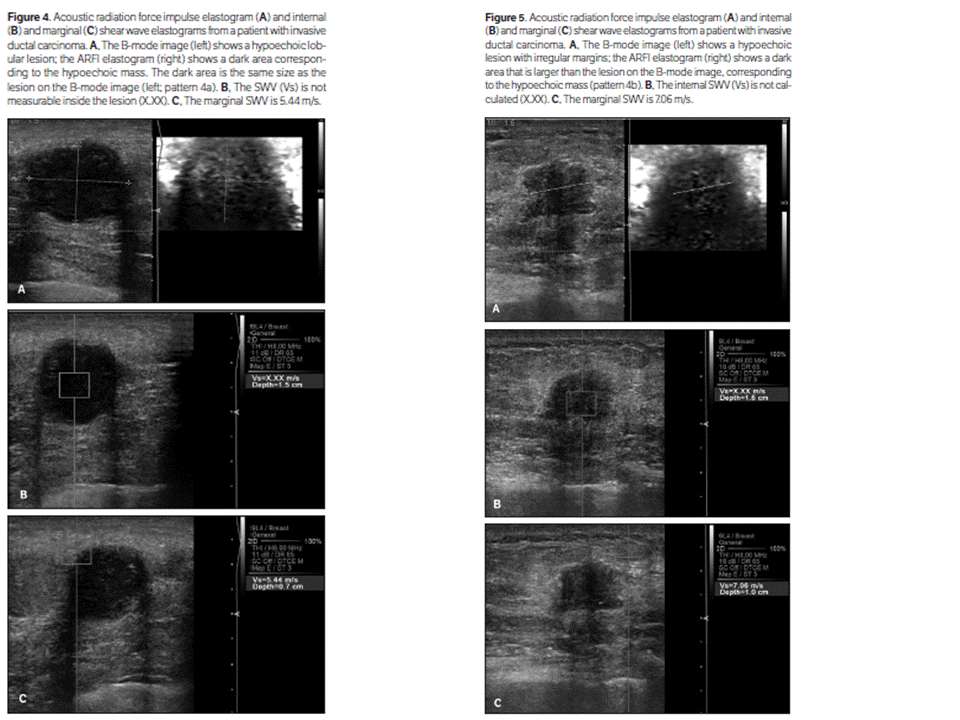Tổng số lượt xem trang
Thứ Sáu, 3 tháng 7, 2015
VTI and VTQ on BREAST TUMORS
Objectives—Breast cancer is the second leading cause of death from cancer in women, and early detection is the key to successful treatment. Unfortunately, even with technological advances, the specificity of imaging modalities is still low. Therefore, we evaluated the value of a newly developed noninvasive technique, acoustic radiation force impulse imaging, for differentiating benign versus malignant breast lesions.
Methods—We prospectively examined 141 breast lesions in 122 patients. All lesions were classified according to the American College of Radiology Breast Imaging Reporting and Data System (BI-RADS) for mammography, BI-RADS for sonography, and Virtual Touch tissue imaging (VTI; Siemens Medical Solutions, Mountain View, CA) pattern. Internal and marginal shear wave velocity (SWV) values for the lesions were noted. The sensitivity, specificity, accuracy, and positive and negative predictive values for VTI and Virtual Touch tissue quantification (VTQ; Siemens Medical Solutions) were calculated.
Results—The marginal SWV values were statistically higher in malignant lesions (mean ± SD, 5.41 ± 1.37 m/s) than benign lesions (2.91 ± 0.88 m/s; P under .001). When the SWV cutoff level was set at 4.07 m/s, and the higher of the internal and marginal values was adopted, the combination of VTI and VTQ showed 95.1% sensitivity, 99.0% specificity, and 97.8% accuracy.
Conclusions—Breast Imaging Reporting and Data System category 4 lesions are the main focus of research for early detection of breast cancer. Unfortunately, BI-RADS category 4 assessment covers a wide range of likelihood of malignancy (2%–95%). This wide range reflects the necessity for a more specific imaging modality. The combination of VTI and VTQ could increase the diagnostic performance of conventional sonography.
Đăng ký:
Đăng Nhận xét
(
Atom
)




Không có nhận xét nào :
Đăng nhận xét